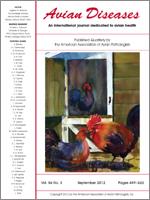Infectious bronchitis coronavirus (IBV) shows extensive genotypic and phenotypic variability. The evolutionary process involves generation of genetic diversity by mutations and recombination followed by replication of those phenotypes favored by selection. In the current study, we examined changes occurring in a wild Arkansas (Ark) challenge strain in chickens that were vaccinated either ocularly with commercially available attenuated ArkDPI-derived vaccines or in ovo with a replication–defective recombinant adenovirus expressing a codon-optimized IBV Ark S1 gene (AdArkIBV.S1ck). Commercial IBV Ark vaccines A, B, and C provided slightly differing levels of protection against homologous challenge. Most importantly for the current study, chickens vaccinated with the different vaccines displayed significant differences in specific B-lymphocyte responses in the Harderian gland (i.e., the challenge virus encountered differing immune selective pressure during invasion among host groups). Based on S1 sequences, five predominant populations were found in different individual vaccinated/challenged chickens. Chickens with the strongest immune response (vaccine A) were able to successfully impede replication of the challenge virus in most chickens, and only the population predominant in the challenge strain was detected in a few IBV-positive birds. In contrast, in chickens showing less than optimal specific immune responses (vaccines B and C) IBV was detected in most chickens, and populations different from the predominant one in the challenge strain were selected and became predominant. These results provide scientific evidence for the assumption that poor vaccination contributes to the emergence of new IBV strains via mutation and/or selection. In ovo vaccination with a low dose of AdArkIBV.S1ck resulted in a mild increase of systemic antibody and reduced viral shedding but no protection against IBV signs and lesions. Under these conditions we detected only virus populations identical to the challenge virus. Possible explanations are discussed. From a broad perspective, these results indicate that selection is an important force driving IBV evolution.
How to translate text using browser tools
1 September 2012
Infectious Bronchitis Virus Subpopulations in Vaccinated Chickens After Challenge
Haroldo Toro,
Daniela Pennington,
Rodrigo A. Gallardo,
Vicky L. van Santen,
Frederik W. van Ginkel,
JianFeng Zhang,
Kellye S. Joiner
ACCESS THE FULL ARTICLE

Avian Diseases
Vol. 56 • No. 3
September 2012
Vol. 56 • No. 3
September 2012




